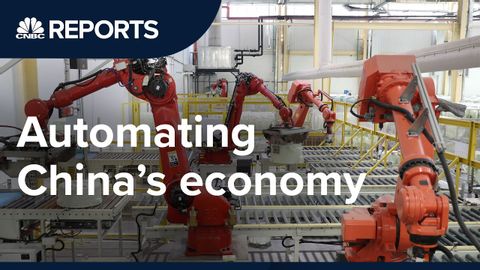中国は自動化を利用してどのように経済を再構築しているのか|CNBC Reports (How China is using automation to reshape its economy | CNBC Reports)
Summer が 2021 年 05 月 24 日 に投稿  この条件に一致する単語はありません
この条件に一致する単語はありません- v.t./i.進化させる;展開する;進化する;変遷する
US /ˌɑrtəˈfɪʃəl/
・
UK /ˌɑ:tɪ'fɪʃl/
- adj.不自然な : 偽りの : わざとらしい;人工の
エネルギーを使用
すべての単語を解除
発音・解説・フィルター機能を解除
